 How Often Should Storm Drain Maintenance Be Performed
How Often Should Storm Drain Maintenance Be Performed

Storm drain systems serve a vital role in urban infrastructure, designed to channel rainwater away from streets and properties to prevent flooding and protect water quality. For property owners, business owners, and facility managers, regular maintenance of these systems is not just a matter of operational efficiencyit’s a critical responsibility that impacts public safety and environmental health.
The Purpose of Storm Drains in Urban Areas
Storm drains are engineered to manage water runoff during rainfall events. By swiftly directing excess water into nearby waterways or municipal drainage systems, they mitigate the risk of flooding, which can cause significant property damage and disrupt daily life.
The Crucial Role of Regular Maintenance
Regular maintenance ensures that storm drains function effectively, preventing the accumulation of debris that can lead to blockages and subsequent flooding. It also helps in identifying potential issues early, such as cracks or corrosion, which can be addressed before they escalate into costly repairs.
Contribution to Environmental Protection
Well-maintained storm drains contribute to the protection of local waterways by filtering out pollutants and debris that would otherwise contaminate water sources. This not only preserves the natural ecosystem but also maintains the quality of water that communities rely on.
The Impact of Neglect
Neglecting storm drain maintenance can have dire consequences. Blocked or damaged drains can lead to water backing up, causing erosion, property damage, and even health hazards from stagnant water. Moreover, property owners may face legal and financial repercussions if they fail to uphold the required standards of maintenance.
By understanding the importance of storm drain maintenance, you can take proactive steps to ensure the safety, functionality, and environmental compliance of your property’s drainage systems.
Recommended Frequency for Storm Drain Maintenance
Understanding the appropriate timing for storm drain maintenance is essential for ensuring the functionality and longevity of urban drainage systems. The following guidelines provide a framework for property owners, business owners, and facility managers to establish a maintenance schedule that aligns with seasonal variations and specific local conditions.
General Guidelines for Maintenance Scheduling
It is generally advised that storm drains undergo maintenance at least annually. This routine check helps to identify and address any potential issues before they escalate into more significant problems.
Seasonal Considerations
The timing of maintenance can be influenced by seasonal changes. For instance, conducting maintenance before winter can prevent blockages that lead to ice formation and potential flooding during thaw periods. Conversely, summer offers better accessibility for maintenance crews and can prevent bacteria buildup and address damage from summer storms.
Summer: The Optimal Season for Maintenance
Summer is often considered the ideal time for storm drain maintenance due to several factors:
- Accessibility: Dry weather conditions typically allow for easier access to drainage systems.
- Preventative Care: Addressing any issues before the onset of autumn rains and winter snowfall can prevent more severe damage.
Tailoring Maintenance to Specific Needs
To determine the optimal maintenance schedule, property owners should consider:
- Local Climate: Areas prone to heavy rainfall or frequent storms may require more frequent checks.
- Surrounding Environment: The presence of trees and foliage can increase the risk of blockages from leaves and debris.
By adhering to these guidelines and considering local environmental factors, you can ensure that your storm drains remain functional and effective throughout the year.
Identifying the Need for Maintenance: Key Signs and Symptoms
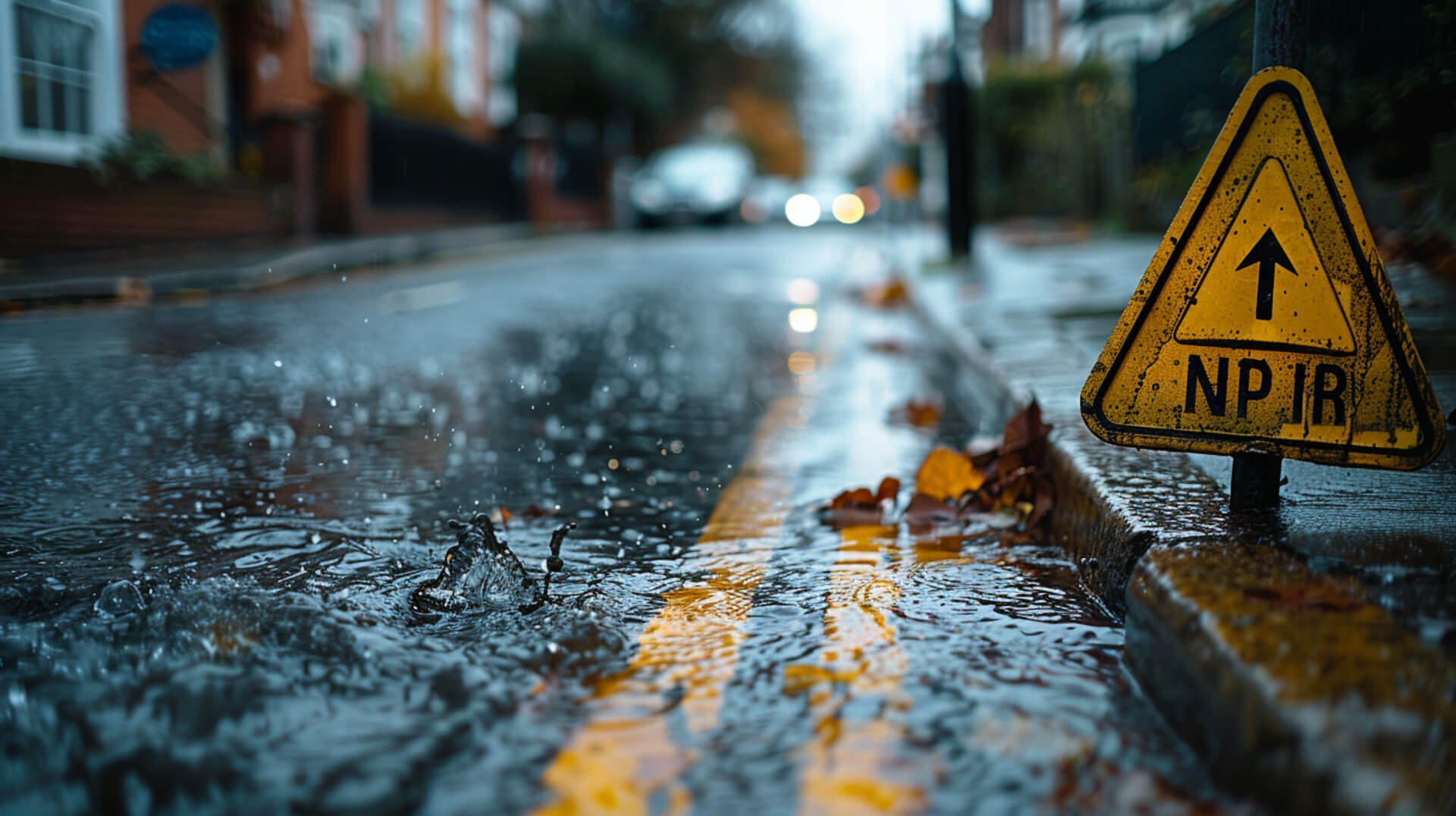
Regular inspections are a proactive measure to ensure the functionality of storm drain systems. Recognising the early signs that indicate a storm drain requires maintenance can prevent more significant issues and ensure the safety and efficiency of urban infrastructure.
Visible Indicators of Storm Drain Issues
Several symptoms may signal that a storm drain is compromised and needs immediate attention:
- Slow Drainage: Water pooling and not draining quickly is often the first sign of a blockage.
- Overflowing Gutters: During rainfall, gutters that overflow may indicate that the storm drain is not functioning correctly.
- Water Stains: Marks on surfaces near drains can suggest previous water overflow, pointing to potential blockages.
Consequences of Ignoring Maintenance Signs
Neglecting these warning signs can lead to:
- Flooding: Which can cause property damage and environmental harm.
- Erosion: That undermines the structural integrity of nearby landscapes and infrastructure.
The Role of Regular Inspections
Routine inspections help in:
- Early Detection: Identifying issues before they escalate into costly repairs.
- Preventative Maintenance: Allowing for the removal of debris and potential obstructions.
By staying vigilant and responding to these signs, you can maintain the effectiveness of storm drains, thereby protecting your property and contributing to the overall health of the urban ecosystem.
Adapting Storm Drain Maintenance to Climate Change
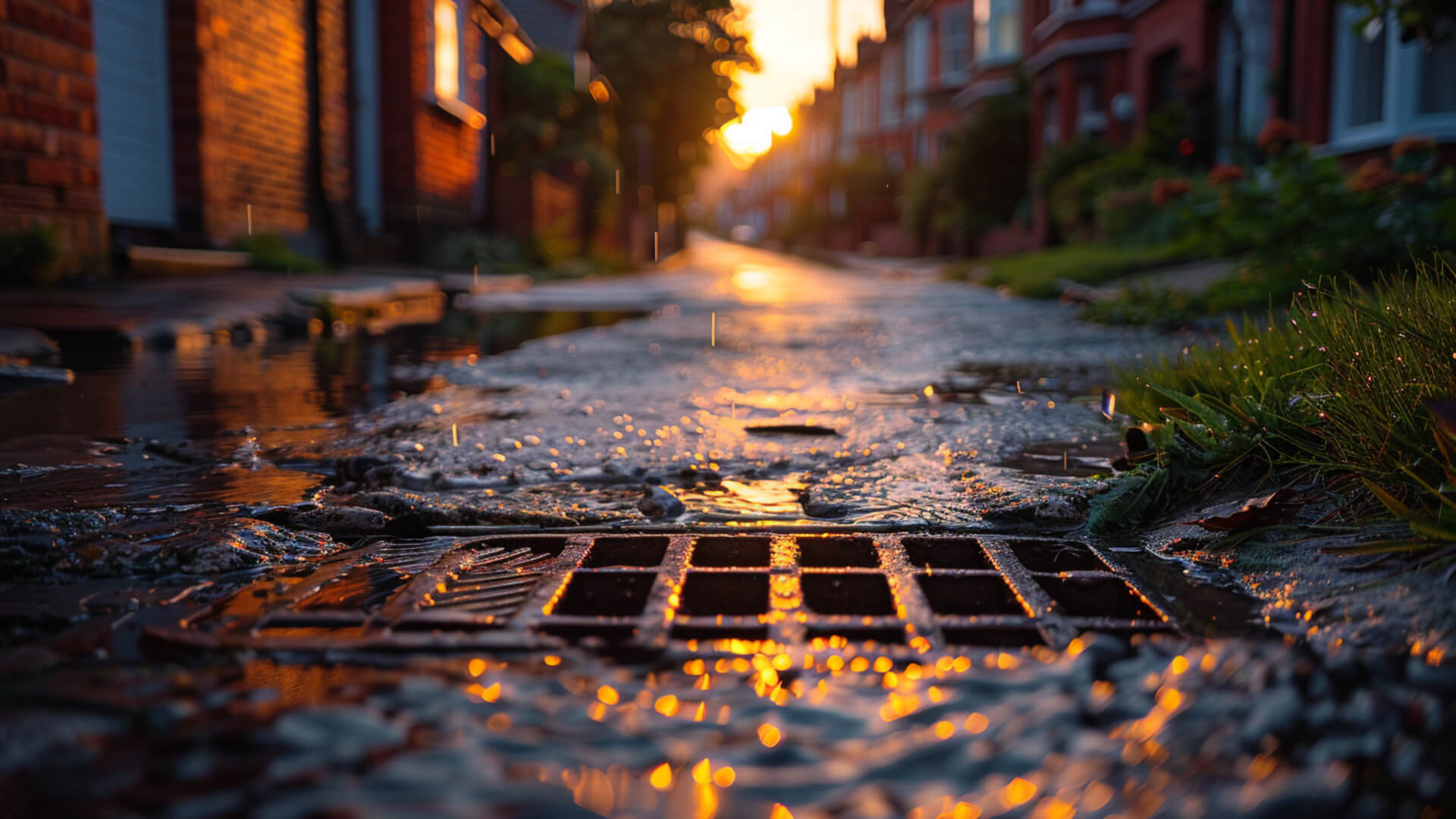
Climate change has introduced new variables in the management of storm drain systems, necessitating a reevaluation of maintenance schedules and practices.
Increased Frequency and Intensity of Weather Events
Recent patterns indicate a rise in the frequency and severity of extreme weather events. These changes have direct implications for storm drain systems, which are now under greater strain due to increased rainfall and flooding incidents.
Reassessing Maintenance Schedules
The unpredictability brought about by climate change means that historical data may no longer provide an accurate basis for planning storm drain maintenance. Property owners are encouraged to adopt more flexible and responsive maintenance schedules to adapt to these changes.
Historical Data and Planning Challenges
As historical weather patterns become less reliable, maintenance planning must incorporate real-time data and predictive modelling to anticipate and mitigate the risks associated with severe weather conditions.
Proactive Adaptation Strategies
Property owners can adapt their maintenance practices by:
- Increasing Inspection Frequency: Especially during periods known for unpredictable weather patterns.
- Incorporating Weather Monitoring: Utilising advanced tools to stay informed about potential weather events that could impact storm drain systems.
- Engaging with Experts: Consulting with professionals who can provide insights into the best practices for storm drain maintenance in a changing climate.
By acknowledging the impact of climate change and adjusting maintenance strategies accordingly, property owners can ensure the resilience and efficiency of their storm drain systems.
Preventative Measures to Reduce Maintenance Needs

Proactive steps taken by property owners can significantly reduce the frequency and extent of storm drain maintenance. These preventative measures are designed to ensure the smooth operation of storm drain systems and prevent the occurrence of blockages and system failures.
Routine Actions to Prevent Clogs
To minimise the risk of clogs in storm drains, routine actions include:
- Regular Cleaning: Remove leaves and debris from the surface of drain grates.
- Proper Disposal of Waste: Avoid disposing of waste materials in storm drains to prevent blockages.
The Importance of Professional Inspections
Professional inspections play a vital role in preventative maintenance by:
- Identifying Potential Issues: Early detection of minor problems before they escalate.
- Expert Recommendations: Providing guidance on maintaining and improving storm drain systems.
Leveraging Technology for Maintenance
Advancements in technology offer valuable tools for preventative storm drain maintenance:
- Weather Monitoring: Utilise real-time data to anticipate and prepare for heavy rainfall or flooding.
- Maintenance Software: Implement software solutions for scheduling and tracking maintenance activities.
By incorporating these preventative measures, you can extend the life of your storm drain systems and contribute to the overall health of the urban infrastructure.
The Role of the Community in Storm Drain Maintenance

The effectiveness of storm drain systems is not solely the responsibility of municipal services; it also relies on the active participation of the community. Property owners, business owners, and facility managers play a pivotal role in maintaining the functionality of these essential urban infrastructure components.
Individual and Business Contributions to Storm Drain Efficacy
Every member of the community can contribute to the health of storm drain systems by:
- Avoiding Littering: Ensuring trash is properly disposed of, rather than ending up in storm drains.
- Landscaping Considerations: Designing outdoor spaces to minimise runoff and debris that can clog drains.
Property Owner Responsibilities
As a property owner, your responsibilities include:
- Regular Inspections: Checking nearby storm drains for blockages, especially after heavy rainfall or storms.
- Reporting Issues: Contacting local authorities if you notice overflowing or damaged storm drains.
Importance of Community Involvement
Community involvement is crucial because:
- Collective Effort: It reduces the burden on municipal services and leads to more efficient stormwater management.
- Local Knowledge: Residents and business owners can provide timely reports on storm drain issues, leading to quicker resolutions.
Enhancing Maintenance Through Collaboration
Working together with local authorities can enhance storm drain maintenance by:
- Reporting Backups: Alerting city maintenance departments to potential problems.
- Participating in Clean-Up Initiatives: Volunteering for community clean-up events to keep storm drains clear.
By engaging in these practices, you help maintain the integrity of the storm drain system, thereby protecting your property and contributing to the well-being of the community.
Specialised Services for Storm Drain Maintenance
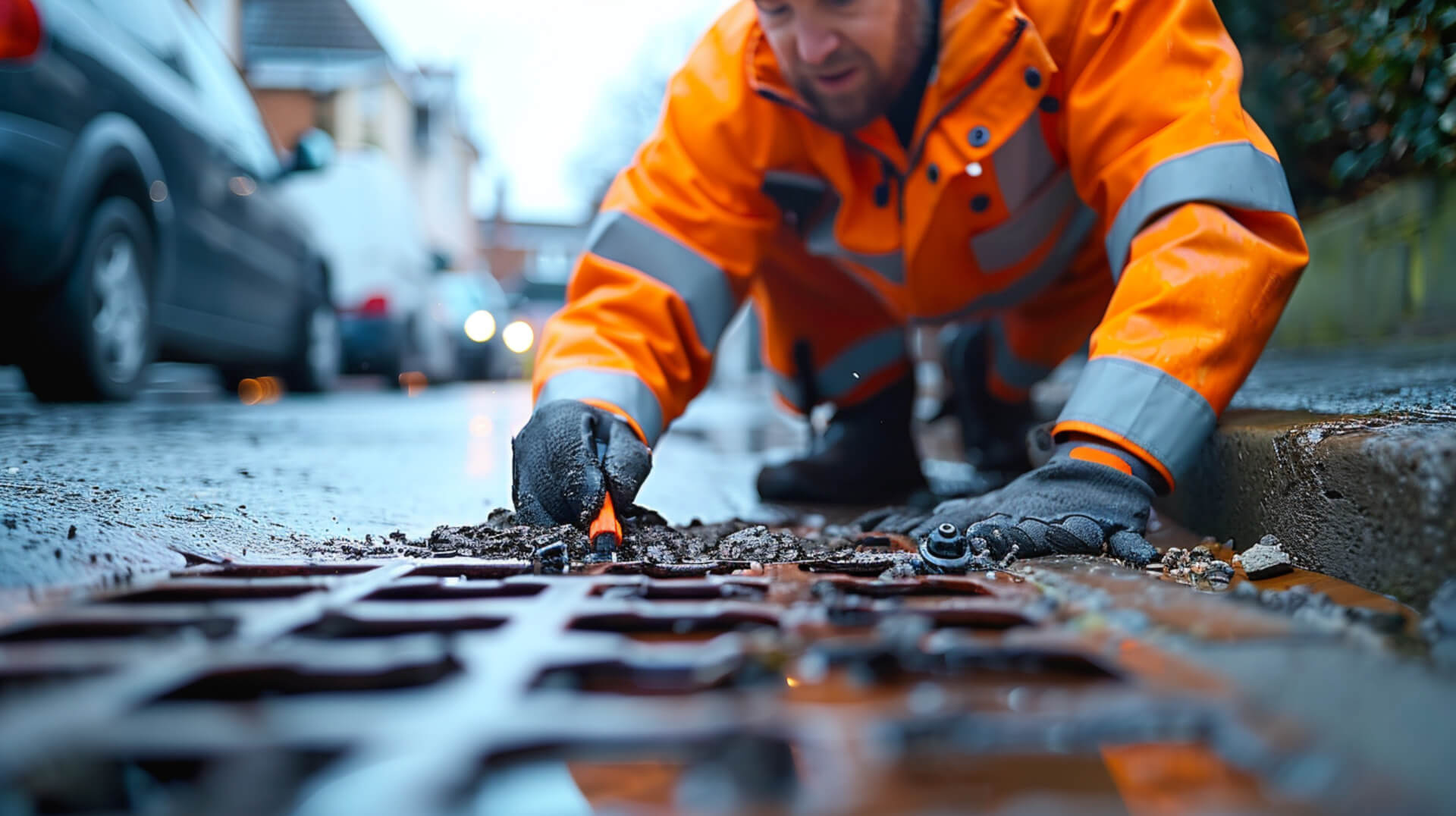
When routine checks reveal complex issues, or when your storm drain system requires comprehensive care, specialised maintenance services become necessary. These services are designed to address and resolve intricate problems that go beyond the scope of standard maintenance.
Advanced Techniques for Maintaining Storm Drains
Several advanced methods are employed by professionals to ensure the health of storm drain systems:
- High-Pressure Water Jetting: This method effectively clears blockages and buildup within the pipes.
- Septic Cleanup: Ensures that waste is properly managed, preventing contamination and overflow.
The Importance of Expertise in Stormwater Management
Selecting qualified experts for stormwater system design and maintenance is crucial because:
- Professional Knowledge: Experts bring a depth of understanding that ensures the system functions correctly.
- Compliance with Regulations: Qualified professionals will ensure that your stormwater system adheres to local and national standards.
Choosing the Right Service Provider
When evaluating potential service providers, consider the following:
- Experience: Look for a proven track record in storm drain maintenance.
- Certifications: Ensure the provider has the necessary qualifications and adheres to industry standards.
- Services Offered: Confirm that they offer the specific services your system requires.
By carefully selecting a service provider with the right expertise, you can maintain the functionality and compliance of your storm drain system, thereby safeguarding your property and the environment.
Legal and Financial Implications of Neglecting Storm Drain Maintenance

Maintenance of storm drains is not only a matter of functionality but also of legal compliance. Neglecting this duty can lead to significant legal and financial repercussions.
Potential Legal Consequences
Failure to maintain storm drains can result in:
- Violations of Environmental Regulations: Non-compliance with environmental laws may lead to legal action.
- Public Safety Hazards: If neglect results in damage or injury, property owners may face liability issues.
Financial Penalties and Increased Costs
Ignoring maintenance needs can be costly:
- Fines: Municipalities may impose fines for non-compliance with stormwater management regulations.
- Repair Expenses: Deferred maintenance often leads to more extensive and expensive repairs down the line.
Importance of Regulatory Compliance
Adherence to local regulations is essential because:
- Protects Water Quality: Ensures that stormwater systems do not contribute to pollution.
- Upholds Community Standards: Aligns with community efforts to manage stormwater effectively.
Maintaining Property Values
Proper storm drain maintenance contributes to:
- Preventing Property Damage: Reduces the risk of flooding and associated repair costs.
- Sustaining Property Values: A well-maintained property is less likely to incur value depreciation due to infrastructure issues.
By staying informed about and compliant with storm drain maintenance regulations, you can avoid legal issues, minimise financial risks, and contribute to the overall safety and well-being of the community.
Impact of Impermeable Surfaces on Storm Drain Systems
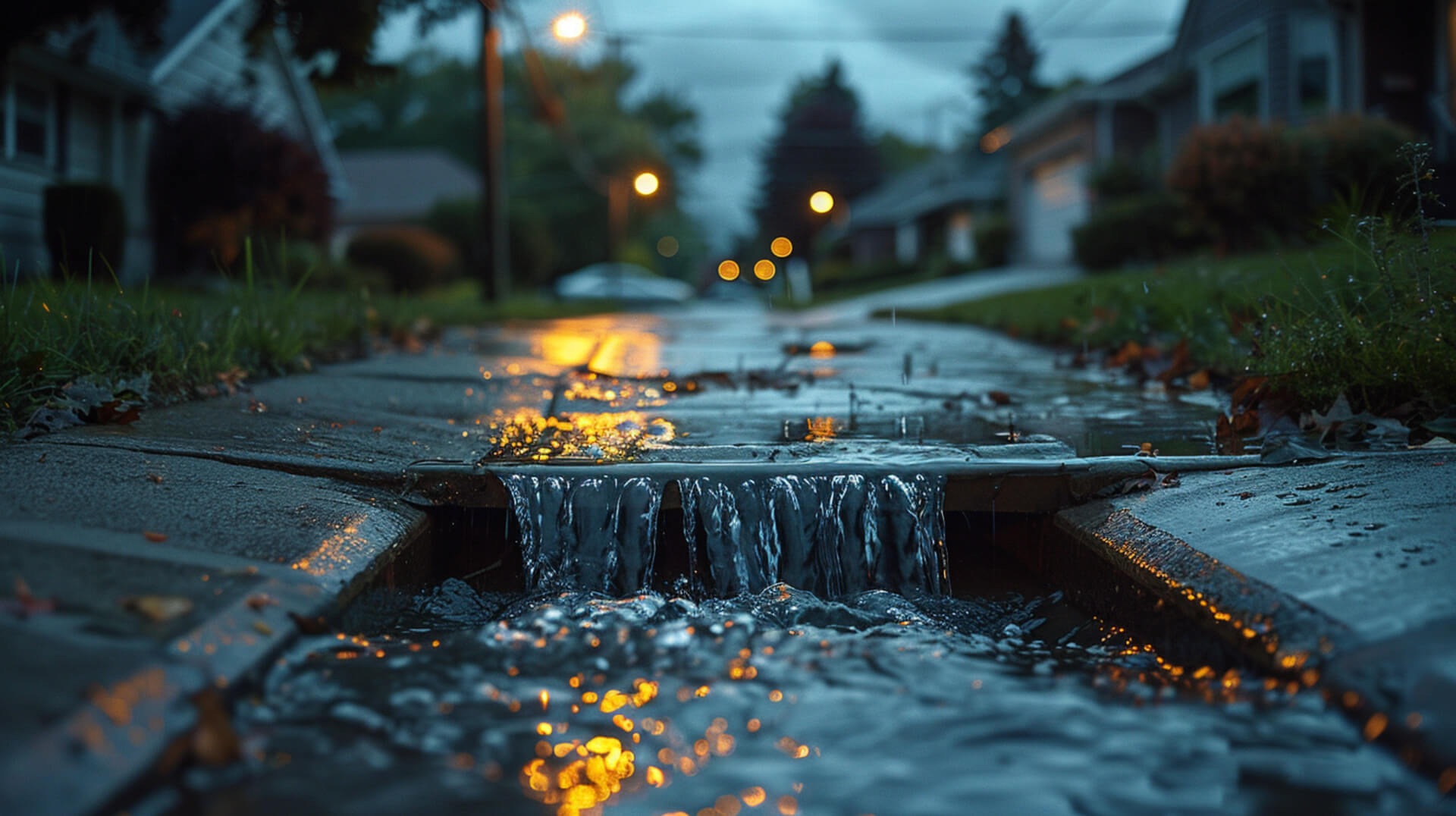
Impermeable surfaces in urban environments can significantly affect the efficiency of storm drain systems. These surfaces prevent water from naturally soaking into the ground, leading to increased runoff during rainfall.
Design Features for Enhanced Storm Drain Performance
To improve storm drain performance and durability, consider incorporating the following design features:
- Graded Landscaping: Sloping the land away from structures to facilitate water flow towards storm drains.
- Porous Pavements: Using materials that allow water to percolate through, reducing runoff and strain on the drainage system.
Importance of Maintenance in Development Plans
Incorporating maintenance considerations into property development plans is crucial for:
- Long-Term Functionality: Ensuring that storm drains remain accessible and serviceable.
- Cost Efficiency: Reducing the need for frequent and costly repairs through thoughtful design.
Innovative Materials and Techniques to Reduce Maintenance
The use of innovative materials and construction techniques can lead to a reduction in maintenance frequency:
- Durable Materials: Such as reinforced concrete, can withstand environmental stressors better than traditional materials.
- Advanced Construction Techniques: Like modular stormwater detention systems, can be more easily inspected and maintained.
By addressing these considerations, you can enhance the resilience of storm drain systems and contribute to more sustainable urban water management practices.
Mitigating Transportation Risks Through Storm Drain Maintenance
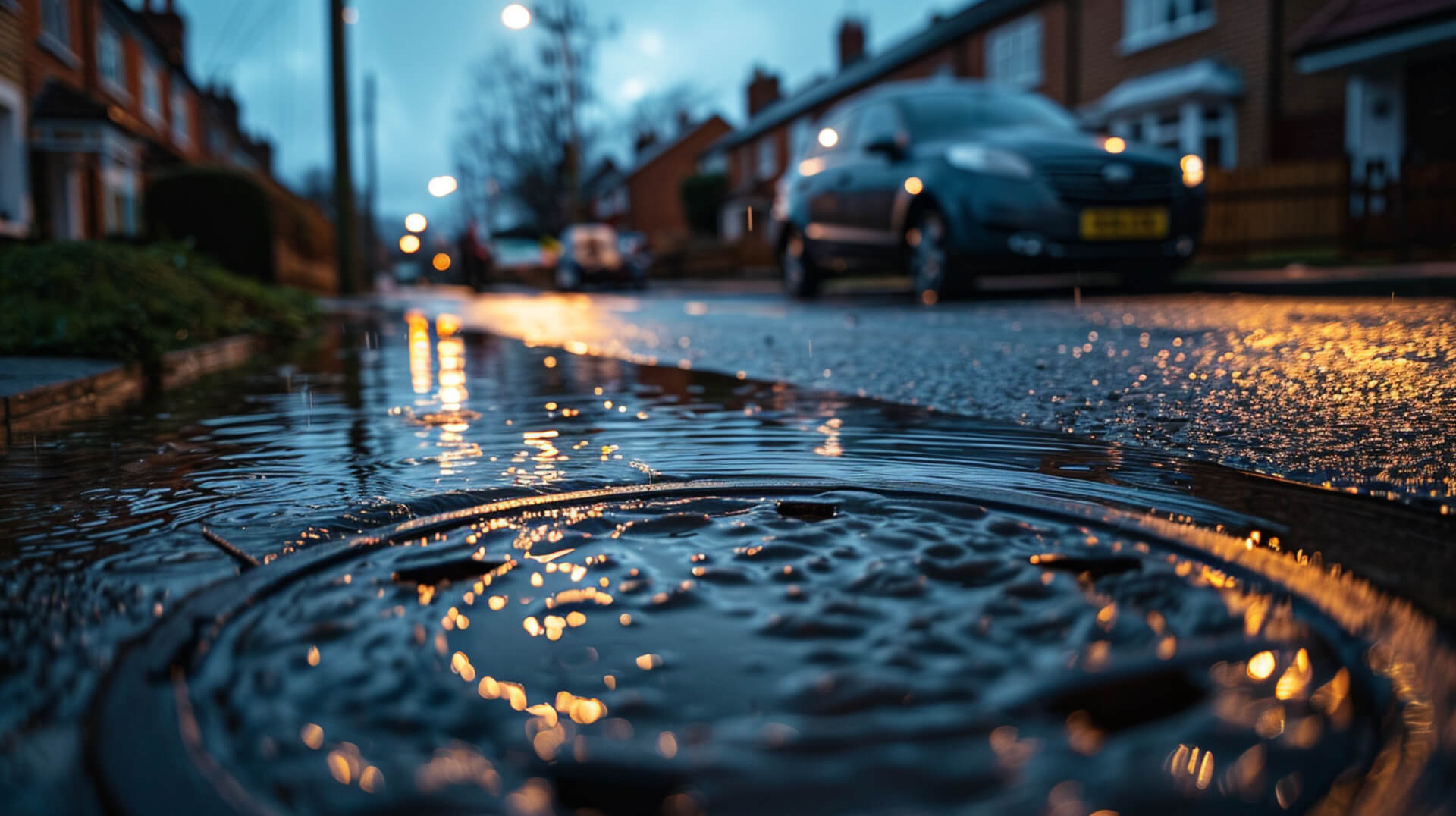
Proper storm drain maintenance is a critical component in safeguarding transportation infrastructure. Neglected storm drains can lead to water buildup, which poses risks to roads, railways, and other transportation systems.
Risks to Transportation Infrastructure
Neglected storm drains can cause:
- Road Damage: Water overflow can weaken road surfaces, leading to potholes and structural failures.
- Railway Disruptions: Excess water can destabilise railway beds, causing misalignments and service interruptions.
- Public Transit Delays: Flooding from blocked drains can obstruct traffic flow and delay public transportation.
Protective Measures for Transportation Systems
To protect transportation infrastructure, it is essential to:
- Conduct Regular Maintenance: Ensure storm drains are clear to prevent water from undermining transportation systems.
- Implement Drainage Solutions: Incorporate adequate drainage solutions in transportation planning to manage runoff effectively.
Collaborative Efforts for Infrastructure Resilience
Collaboration between property owners, managers, and transportation authorities is crucial to address storm drain-related challenges:
- Shared Responsibility: Work together to monitor and maintain storm drains that may affect transportation routes.
- Strategic Planning: Include storm drain maintenance as a key factor in transportation infrastructure planning.
By integrating storm drain maintenance into transportation planning and fostering collaborative efforts, the risks to infrastructure can be significantly reduced, ensuring safer and more reliable transportation for everyone.
Environmental Benefits of Regular Storm Drain Maintenance

Maintaining storm drains is not only a matter of urban convenience but also a critical environmental stewardship practice. Regular maintenance of these systems plays a significant role in protecting water quality and supporting aquatic ecosystems.
Protecting Water Quality
Storm drains are designed to channel rainwater from urban areas to nearby water bodies. Without regular maintenance, pollutants can accumulate and be swept into rivers, lakes, and oceans, adversely affecting water quality. By ensuring storm drains are clean, you help:
- Prevent Toxin Accumulation: Reduce the risk of harmful substances entering natural water systems.
- Support Aquatic Life: Cleaner waterways contribute to healthier habitats for fish and other aquatic organisms.
Role in Pollution Prevention
Storm drains act as a first line of defence against urban pollutants. Regular maintenance ensures these systems effectively philtre and direct runoff away from water bodies, thereby:
- Minimising Contaminant Spread: Keeping local water sources free from pollutants that can cause ecological damage.
- Reducing Erosion: Lessening the impact of runoff on riverbanks and coastal areas.
Importance of Sustainable Practices
For property owners and managers, adopting sustainable storm drain maintenance practices is essential for:
- Long-Term Environmental Health: Ensuring that maintenance activities do not contribute to environmental degradation.
- Community Well-Being: Contributing to the overall health and safety of the community by preventing waterborne diseases and pests.
By prioritising regular storm drain maintenance, you play a vital role in preserving the environment and ensuring the sustainability of local water resources.
Prioritising Storm Drain Maintenance for Urban Resilience
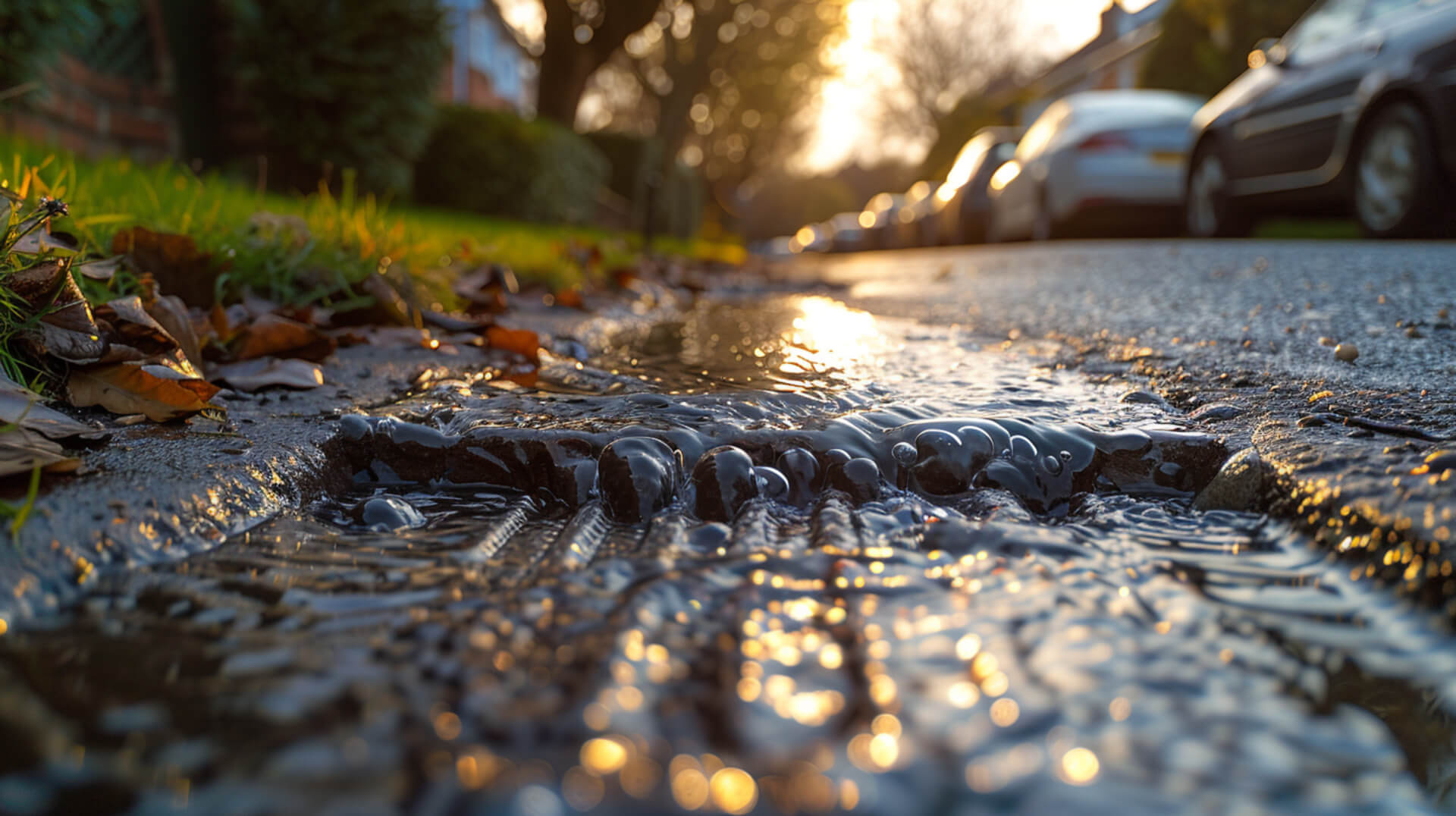
Adopting a proactive approach to storm drain maintenance is not only a matter of civic responsibility but also a critical strategy for ensuring urban resilience. As property owners, business owners, and facility managers, your engagement in regular maintenance activities supports the longevity and effectiveness of these essential systems.
Planning for Long-Term Maintenance Needs
Effective planning for storm drain maintenance involves:
- Assessing Risks: Identifying areas prone to blockages or damage due to local environmental factors.
- Scheduling Regular Checks: Establishing a maintenance calendar that accounts for seasonal variations and potential climate change impacts.
Learning from Past Management Challenges
Recent challenges in storm drain management have highlighted the need for:
- Flexibility: Adapting maintenance schedules to accommodate unexpected weather events.
- Preventative Measures: Implementing strategies to mitigate potential issues before they arise.
Collaborative Efforts for Maintenance Improvements
Collaboration between stakeholders can lead to significant improvements in storm drain maintenance by:
- Sharing Resources: Pooling knowledge and equipment to address common challenges.
- Innovative Solutions: Exploring new materials and technologies to enhance system durability and efficiency.
By prioritising storm drain maintenance, you contribute to the infrastructure’s resilience, ensuring that it continues to protect urban areas from water-related damage and supports a healthy environment.


